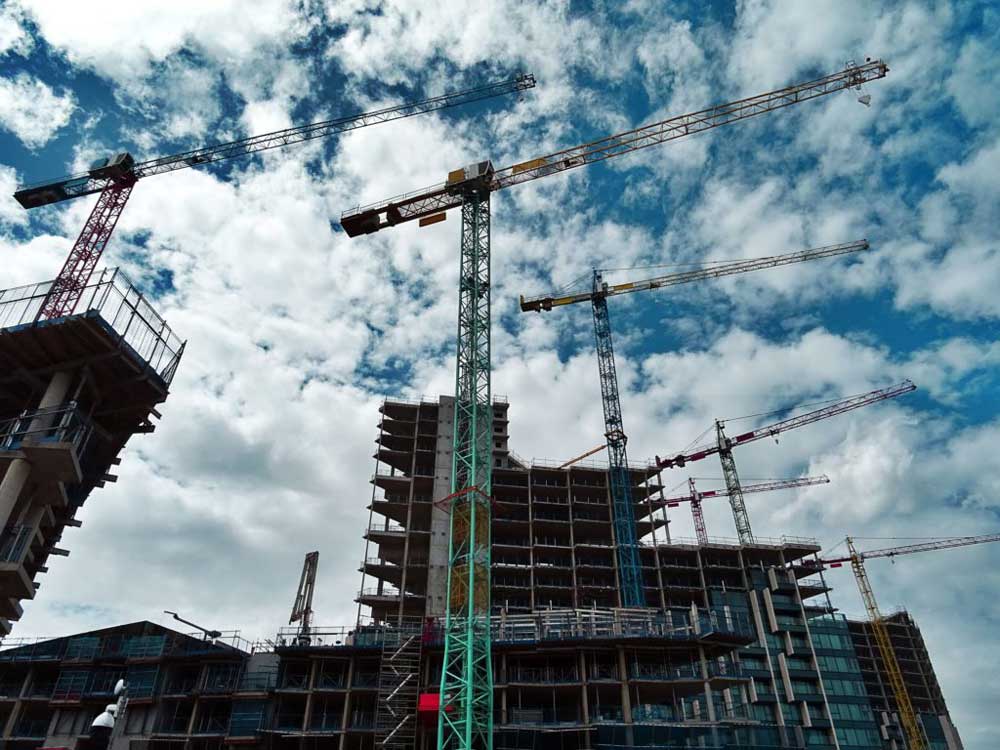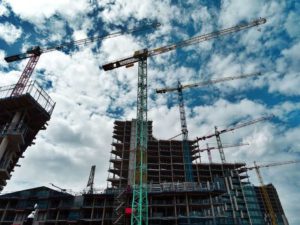Do you have a construction site security plan in place? According to the National Equipment Register’s (NER) “Equipment Theft Report,” the value of equipment stolen annually in the United States ranges from $300 million to $1 billion! The same report indicates that less than 25% of stolen equipment is recovered. Vehicles and equipment aren’t the only targets on construction sites for thieves.
Reports indicate that copper theft—specifically the theft of copper electrical components, such as wires—costs the United States roughly $1 billion per year as well, and has the potential to cause significant damage to the nation’s vital electrical and communication infrastructure. Proper construction site security has never been more important.
The theft of equipment and electrical components is of special concern to those who own and operate construction sites. Thieves tend to see construction sites as easy targets when compared with more conventional robbery targets. After all, most building sites are located in open areas, without the benefit of the natural security of enclosing walls and a roof.
Likewise, many construction sites are located in remote locations, far from regular police patrol routes. These factors, coupled with the fact that building sites often contain very valuable supplies (copper wire can often be sold for approximately $3 per pound) that are easy to fence and difficult to track (construction equipment uses no standardized serial number system) make for a crime that provides minimal risk, for maximum potential reward.
This is where construction site security comes into play. By investing in the right defenses, construction site managers can drastically decrease the likelihood of falling prey to the theft and vandalism that seem to plague the industry. To help you get started on the right foot, we’d like to discuss seven construction site security options you should be considering.
How Can You Optimize Your Building Site Security?
1. Fences & Locks
It may seem obvious, but many construction sites fail to take the most basic precautions against intrusion. Standard, low-tech building site security measures like fences that surround a construction site are relatively inexpensive and offer a clear indication to any outsiders that the area within is strictly off limits. Are fences impenetrable?
No, of course, they aren’t. They can be climbed and they can be cut, but they at least offer an additional obstacle for any thief who might be considering preying upon your property, and sometimes that’s enough. Ideally, you should also have fences and locks internally around important tools, equipment, and supplies, as a second line of defense..
For onsite construction offices, basic locks may be enough to prevent the theft of important data and office equipment, but choosing to invest in electronic locking mechanisms that take advantage of key card or code locks can increase your overall security significantly.
2. Posted Notices
Now, most intruders who find themselves on your property aren’t there by accident. As such, you may be wondering if something as mundane as a posted notices and signs could really be all that effective as a type of construction site security.
But while they may not do much to actively keep criminals out, they do give intruders an idea of what sort of punishment that they might be facing should they decide to attempt to break in.
Signs that clearly convey that an area is restricted to anyone without authorization and that then explain the possible penalties for entering the area, let criminals know exactly what to expect, which will cause many to change their minds.
3. Proper Identification And Record Keeping
One of the main issues that makes equipment theft so lucrative is that few equipment owners bother to take the necessary precautions against having their equipment stolen. Title and registration for most construction equipment is not mandated, which means that it is up to the owners to ensure that the equipment in question can easily be identified.
This can be done by marking all equipment with unique identifying tags, such as engraved PINs and owner applied numbers (OANs), in multiple locations on the equipment. This, when coupled with an up-to-date record of all equipment (including manufacturer, model number, purchase date, etc.), makes it much more likely that stolen equipment will be found, identified, and returned.
4. Lighting
Did you ever think that effective lighting could double up as building site security? Large, open, and outdoor, construction sites seldom have sufficient lighting to prevent criminals from being able to operate in shadow. However, by investing in a comprehensive lighting system that effectively eliminates places to hide, you can help deter criminals from targeting your site.
Alternatively, lights connecting to motion-sensing systems can have an even greater impact, by startling prowlers who enter your property.
5. Alarms
Speaking of startling prowlers, there are few things as likely to bring an attempted robbery to a screeching halt as well as an alarm. Audible sirens, flashing lights, and the very real threat of exposure generally compel intruders to drop what they’re doing and flee as quickly as possible.
Of course, if you’d rather not give the intruders a chance to get away, you could always invest in a silent alarm as your construction site security solution. This is designed to contact authorities directly, without giving the intruder any indication that an alarm has been triggered. Either alarm can be used with motion sensors, effectively automating the process.
6. Security Guards
Many construction site managers prefer not to put the security of their property in the hands of automation—this is where paid security guards come in handy. Security guards offer an added layer of protection by providing a human presence on-site.
Of course, they are not without their disadvantages: Security guards are expensive, may become bored or distracted during long shifts, and might even find themselves in physical danger should they interrupt a robbery in progress. Still, there are times when having a living person protecting your site may make all of the difference, which brings us to our final point…
7. Job Site Camera And Video Surveillance
For constant eyes on your property, few options beat having a job site camera for video surveillance. Of course, your basic video camera system still has its flaws: cameras can be disabled from their power source, on-site recordings can be stolen or damaged, and criminals who know how to hide their faces can often get away despite being captured on video.
This is where Pro-Vigil’s remote security guards differ from conventional surveillance systems. These systems actively watch your property, noting and evaluating potential threats as they appear. Suspicious activity can then be evaluated by an off-site monitoring team.
Alternatively, the remote guard systems can automatically activate a variety of threat deterrent systems (such as sirens, strobe lights, and pre-recorded messages), or they can contact law-enforcement directly should the need arise. Pro-Vigil remote security guards combine the benefits of multiple systems, without any of the disadvantages, all at an affordable price.






